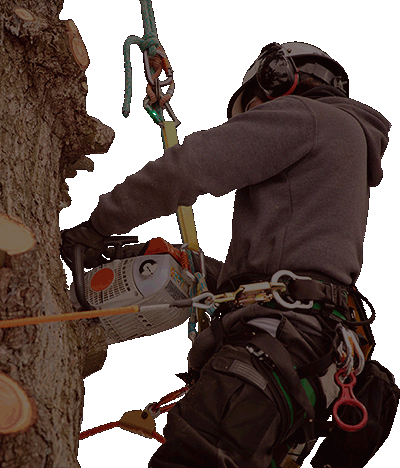
What’s the first thing that comes to mind when you think of palm trees?
The scene probably includes a light breeze, warm sand and turquoise water washing ashore. That is why we love the slice of paradise palm Spartanburg trees bring to our landscape.
Because palm Spartanburg trees exude such bliss, it’s our job to give them the best care possible. Proper palm Spartanburg tree trimming is key to keeping these treasures healthy and thriving.
Scroll on to learn how to prune palm Spartanburg trees – step-by-step.
Step 1: Inspect the Tree
Old or dead palm Spartanburg tree leaves—called fronds—should be at the top of your pruning list. They’re yellow or brown on the outside and may be harboring pests underneath.
Also, check stems for flowers or fruit. Both can slow Spartanburg tree growth by providing food or shelter for pests.
Step 2: Plan the Prune
Before you begin, remember this key palm Spartanburg tree trimming tip.
Prune only to remove old fronds, flowers, fruit, or hazardous limbs.
Trimming beyond that creates a thin and narrow “hurricane cut” that’s not good for the health or look of your tree. Palm Spartanburg trees need a full, circular canopy of healthy, green fronds to continue to grow and defend against pests.
Step 3: The Precise Prune
Depending on the size of your palm tree, pruning shears or a saw will do the job. If you need to trim tall palm trees, call in a certified arborist. Attempting to climb a ladder, while wielding pruning tools, puts you in danger.
If you’re trimming a small palm tree, carefully prune fronds, flowers and fruit leaving at least 2 inches of greenery on the trunk.
Working your way down, gently pull off loose blades—called petioles—from the trunk. If the petiole is hard to remove, leave it be.
Need help pruning palm trees? Schedule a free consultation, or comment below with any palm pruning questions.






